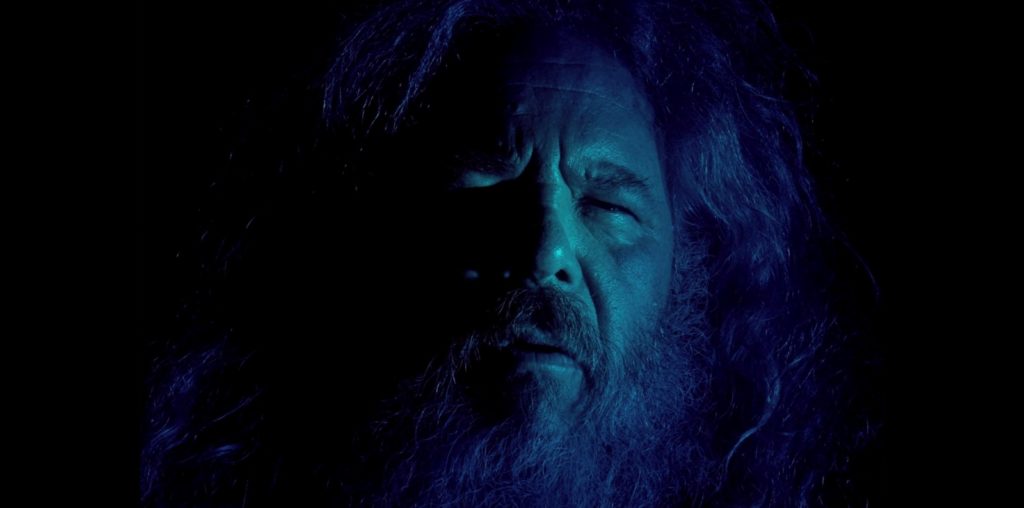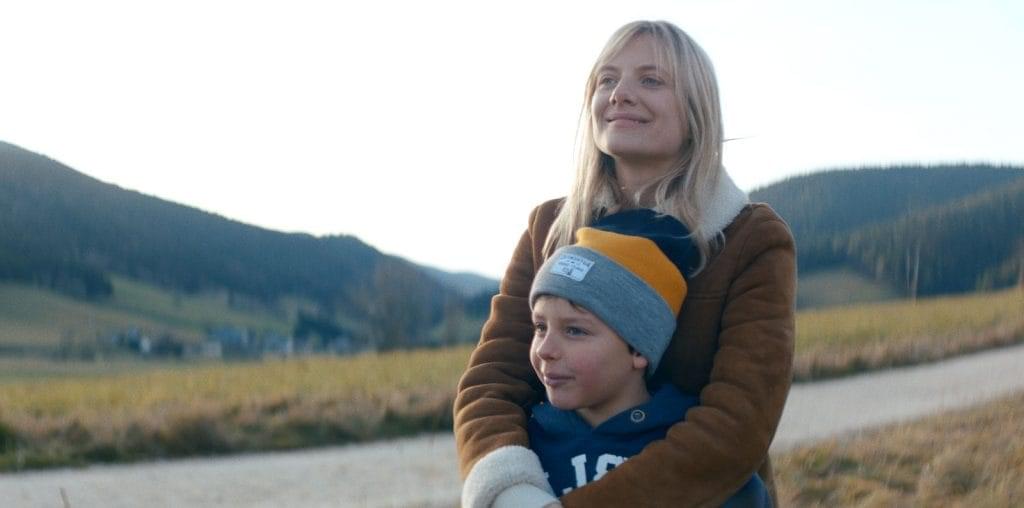
This DVD provides a sample of British filmmaker Chris Welsby’s output from the last 35 years. The helpful accompanying booklet makes clear that Welsby’s ¦uvre is much larger than is represented here, and that it also includes numerous film and video installation pieces for museums and galleries. An included interview with Welsby supplies the viewer with background and context.
Welsby’s work since the 1970s has focused on the natural world. His films often include a scheme which allows some natural process, such as wind or clouds, to make basic filmic compositional choices and determine what the camera looks at. For example, in “Wind Vane,” a double screen projection piece from 1972, two cameras are placed 50 feet apart in a field, shooting simultaneous footage of the landscape. The cameras are fitted onto tripods equipped with wind vanes, so that both of them swing freely on the horizontal plane, reflecting the prevailing wind direction from their respective positions.
In his best films, Welsby achieves an effect I think of as “heightening the curve,” in the sense that a mathematician might take the graph of a mathematical property which has a very subtle, difficult-to-see curve to it, and multiply some of the parameters so that the curve would be startlingly dramatized while still maintaining its essential shape.
For example, in “Park Film” (1973), the motionless camera looks on at a busy city park. The camera is set so that the more motion is detected, the more frames the camera takes. The result is an 8 minute time-lapse study of two days in a park in which, unlike traditional time-lapse film, the rate of change in the image is determined by what the camera is looking at. We never see the landscape devoid of people; and the more people there are, the more we see of their movement. If Welsby’s aim was to get us to see the subtle curve of “how much activity is in the park from moment to moment,” he could have shown us an 8 hour real time film, such as Warhol might have made, and this would have shown the curve the way it occurs in real life, but at a rate which is so slow as to be nearly invisible. He might also have made a traditional time-lapse film in which the frames are taken at regular intervals, say, one frame every 3 minutes. This would enable us to see the curve a little better, but the monotony and the lulling effect of the stretches with no motion would still make it hard to see. By having the frame rate directly set by the amount of motion, Welsby heightens the curve much further, making it truly visceral and visible for the viewer.
Perhaps the most dramatic example of this technique of heightening the curve is seen in “Seven Days” (1974). In this film, a camera is set in a landscape with a flowing stream, and it is arranged that the camera follows the motion of the sun across the sky. In this time-lapse film, a full week is compressed into 20 minutes of screen time, so that each day takes two and a half minutes. A further wrinkle to the scheme is that there is a device which flips the camera around 180º, depending on whether the sun is behind a cloud or not. When the sun is out, the camera points directly away from the sun, so that the shadow of the tripod is centered in the image as the camera slowly traverses the landscape. When the sun goes behind a cloud, the camera looks directly at the sun (hidden by the cloud). The effect of these jumps is heightened by the soundtrack, since the ambient sound of the stream is much louder for those frames in which the camera is pointed at the ground.
Welsby is aided in this film by the generally dramatic weather of the Welsh landscape. The image switches frequently and irregularly from clouds to grass, as the weather shifts unpredictably. The subtle, hard to see curve of “how often is the sun out during the week” is indeed heightened and made startlingly tactile by the filmmaker’s formal tactics.
In some of the films, the curve is not sufficiently heightened to give the viewer a new way of experiencing natural forces. In “Wind Vane,” for example, the dual screen piece with the horizontally swinging cameras, the curve is actually reduced and flattened, so that it reveals only wind direction, not wind speed, vertical motion, temperature, or any of the other ways in which we experience wind. The film’s effect is also much flatter.
One of the difficulties encountered by any artist who is inspired by nature is that it is impossible to compete directly on an aesthetic level with the natural landscape. No film, performance, or painting will ever be as beautiful or complex as a real landscape, and no work of art will effect us in the way a landscape does, simply because a landscape is a direct experience of reality. A work of art about nature can only properly engage us by giving us a window into the consciousness of the artist, or, as in Welsby’s best work, using technology and artistic choices to enable us to experience the world in a way that our normal human consciousness doesn’t allow us to. Some of the films included in this collection (“Stream Line” and “Drift” come to mind) unfortunately did not provide me with this heightened level of awareness. Watching these films, I was acutely aware that if I had gone out and experienced a landscape on my own, I would have had a much more powerfully meaningful experience.
One film in the collection, “Sky Light” (1986), while it shares the subject of nature with the others, is a completely different kind of film. This epic (26 minute) and expressionistic film was a direct response to the Chernobyl disaster, and the radioactive fallout which was spread world wide, but especially over Europe. Welsby is an artist who is inspired chiefly by the beauty of the natural world, and an event such as Chernobyl, which warns of the danger which nuclear power poses to all life on earth, is enough to move him from his formalist filmmaking into making a film which is explicitly expressive and implicitly political. The film begins with a collage of shots of a stream, reflecting the sky and the trees. The soundtrack is a collage of water and exuberant birdsong. This gives way to shots of the sky, shot in extremely jerky stop motion, the frames interposed with single white frames. The soundtrack becomes filled with shortwave radio sounds. This is followed by a long section in which the handheld camera roams, desperately and randomly, over a completely frozen winter scene, reminiscent of “nuclear winter,” while the wind and the radio static howls on the soundtrack. This is followed by the sky again, in increasingly agitated and broken footage, until the screen flickers between blue and white, a world of pure energy in which human life is impossible, as the sound is reduced to a geiger counter. This powerfully expressive film of a world in which water and air carry invisible death shows that, when Welsby truly has something he wants to say, he possesses the film language and artistry with which to say it.
With the exception of “Sky Light,” all of the films here are essentially ambient films, lacking development in the traditional sense. In the accompanying interview, the artist mentions that he likes doing his installation pieces better than his theatrical films, since he does not have to deal with questions of development when making works meant to be viewed in a gallery. The few glimpses of his installation pieces which we can see in the interview look stunningly beautiful. It is certainly possible that, given his sensibility, Welsby’s greatest works are his installation pieces.
The films nevertheless all provide an entry point to his work. And one of the advantages of seeing a film on DVD, as opposed to in a theater, is that you can choose when and how much of a film to watch. You might even set your DVD player to “repeat,” place your TV in a spot in your home which could use a little more natural beauty, and use it to create your own personal installation piece.

